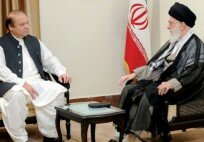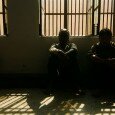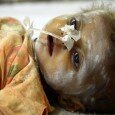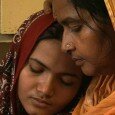By Mirza Khurram Shahzad –
When Afshan’s elder sister refused a marriage proposal from Arshad, she wasn’t fully aware of the eventual consequences, even when Arshad started threatening the entire family with physical violence. But on 3rd April 2010, when somebody threw a bucket full of acid from over the boundary wall of their house, badly burning this eight-year-old girl of a Muzaffargarh village famous for its mango orchards, the reality dawned upon Afshan as to how dangerous domestic disputes can become for women.
Youngest among 8 siblings with four sisters and three brothers, Afshan also lost her mother as a result of this attack and her hopes of ever leading a normal life evaporated into thin air.
The police registered a case against Arshad and his two accomplices, Zahid and Abid, but nothing could be done for the treatment of Afshan’s scarred skin, and she eventually ended up at a clinic run by an NGO, called the Acid Survivors Foundation.
The ASF provides treatment, counseling and support to the survivors of acid attacks, they helped Afshan recover from her physical and psychological wounds, but her face and body could not regain their original shape.
Attiqa Manzoor, a young girl of 22 years, was married to Maqsood Ahmad in a dusty village of Gujranwala. The mother of a two-year-old daughter, Attiqa had been a victim of domestic violence at the hands of her in-laws since she got married, but the worst, most heinous assault happened on 26th April 2006, when her mother-in-law, sister-in-law and brother-in-law threw acid on her after a quarrel at home. She was then locked up in a room to die. They waited until evening, but she wouldn’t stop breathing and they took her to a hospital when they could no longer keep her hidden. The acid had melted her skin right down to her bones.
Attiqa’s parents sold everything that could fetch enough money to arrange for her treatment and pursued a criminal case against the culprits. But all their efforts went in vain, the assailants, in collusion with the police, had already succeeded in registering false cases against them.
Sidra Javed felt the acid burn her body three years ago in June, for resisting the sexual advances of her boss’ son, at the factory where she worked, earning a meager salary of 4,500 rupees per month making water dispensers.
Her father earns a living repairing television sets, but this criminal incident and the load shedding crisis has ruined his business. Now, the 15-year-old girl is living with clumps of her hair burnt into her scalp; her arms, chest and legs all bear the horrific scars of acid. There are splash burns on her feet too. She has lost her right eye and partially damaged the left. She has had six operations, needs reconstruction work on her lips and ears, and requires a hair transplant.
These are only three cases from hundreds of such others, the vast majority of which have been ignored by the police and the media. Attiqa and Afshan are two of the ‘lucky’ ones, who succeeded in getting support from the ASF and have their physical wounds treated, but there are scores of others who die from acid attacks and whose families bury them without even registering a case, saying the death happened by accident, with a fire in the stove.
The numbers
According to statistics by social activists and relevant government offices, 40 acid attacks were reported in the first three months of the year 2014. But from 2007 to 2013, around 949 cases of acid attacks have been reported in the country. From this total, 589 cases were reported from the province of Punjab alone.
A report titled ‘Fostering Effective Implementation of Pro Human Rights Laws: Criminal Law Amendment Act 2011, An Example of Good Practice’ released recently in Islamabad states that 110 acid attacks were reported in 2012 and 143 in 2013.
The report says that the number of cases registered against the acid crimes was increasing because of the awareness created by the social sector against this particular crime but still there are many cases in the remote rural areas of Punjab and Sindh which go unreported due to local culture and social barriers.
Surprisingly, there are several cases of men who have also been attacked with acid. The report underlines that many survivors do not have necessary access to rehabilitation services, 65 per cent of the victims have no access to the justice system and there is still a lack of national consolidated data on incidents, police cases and convictions/acquittals.
The Role of Government
Social activists believe that the government needs to do much more to curb the evil of acid attacks in the country. “It is urgent that the federal and provincial governments ensure stronger protection to Pakistani citizens. Pakistan has inspired many other countries to address acid violence such as Columbia and India but positive steps such as establishing burn centres and social rehabilitation centres, or medical boards must be part of a legislative framework to be sustained and institutionalized,” says Valerie Khan Yousafzai, the chairperson of ASF.
The government applied a minimum sentence of 14 years in jail and a fine of 1 million rupees for those found guilty of throwing acid, in 2011. The conviction rate rose from an average of 6 per cent to 18 per cent in 2012, and the total number of registered cases is on the rise.
Legal experts believe that more legislative measures should be taken to eliminate this curse. “A special court should be set up to deal specifically with acid crimes, to make the legal process easier. The compensation needs to be paid more quickly to help the victims get treatment,” says lawyer Sikandar Naeem.
He said the authorities should also promote awareness against the crime. “It has become much easier to get a conviction because the Supreme Court has (also) taken a special interest in such matters. The statement of a victim alone is sufficient for the conviction of any accused. But creating awareness for reporting the acid crime should also be a priority,” he said.
In 2012, a couple who confessed to murdering their 15-year-old daughter with acid in Kashmir later insisted she had, in fact, committed suicide. They had no witnesses or evidence to back their change in testimony, the judge still released them on bail.
A leading human rights group says nearly 1,000 women and girls are murdered every year after being accused of bringing shame on their families. Mobarik Virk, a senior journalist who has written extensively about social issues and taboos faced by Pakistani society, says the half-hearted efforts and the prevailing ‘lip service’ is not going to yield results.
“Until and unless the government and social sector activists reach out at the grassroots level and set up monitoring systems at remote villages where this crime is most common, such cases will continue to take place. We have claims, slogans and speeches but nothing will be done if they don’t take the matter seriously and set up centres in the affected villages. They should, for God’s sake, at least make it a little difficult to acquire the acid itself.”
The writer is a journalist based in Islamabad































































































